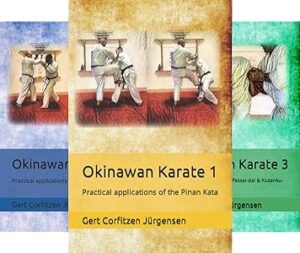This is my curated selection of the finest karate books, carefully chosen from my perspective as a karate enthusiast. Whether you’re an experienced practitioner aiming to enhance your knowledge or a novice ready to begin your journey in martial arts, these books offer invaluable insights into the art of karate. From practical guides on technique application to philosophical explorations of its rich history and principles, each book on this list provides a unique perspective on the diverse facets of karate.
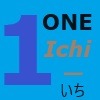 The Essence of Karate
The Essence of Karate
By Gichin Funakoshi
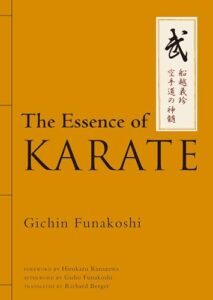
Gichin Funakoshi, revered as the founder of Shotokan karate, the most widespread Japanese style worldwide, presents his insights on modern karate in “The Essence of Karate.” Within, Funakoshi delves into the philosophical and spiritual foundations, recounting his training experiences, insights from fellow masters, and the martial art’s history. He emphasizes the significance of winning without conflict and the phenomenon of martial artists improving with age.
 The Essence of Okinawan Karate-Do
The Essence of Okinawan Karate-Do
By Shoshin Nagamine
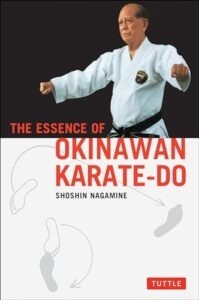
The Essence of Okinawan Karate-Do presents the teachings of the legendary martial arts master Shoshin Nagamine, the founder of the Matsubayashi school of Shorin-Ryu karate-do.
Used for generations as a practical and pictorial guide, it contains over 1,000 photographs to document eighteen classic karate kata (preset forms) and seven yakusoku kumite (prearranged partner exercises), as well as basic techniques. This book is a precise and easily accessible pictorial guide to the performance and perfection of traditional karate.
The only book in English with photos of one of the great prewar masters demonstrating the proper execution of Okinawan karate, The Essence of Okinawan Karate-Do is a bridge between karate’s legendary past and the practitioners of today.
This intelligent and imaginative text explains the historical landmarks in the development of style, vividly outlines its leading forms and techniques, and recalls noted Okinawan karate men of the past, including the author’s teachers Ankichi Arakaki, Choki Motobu, and Chotoku Kyan.
 Tales of Okinawa’s Great Masters
Tales of Okinawa’s Great Masters
By Shoshin Nagamine (Author), Patrick McCarthy (Translator)
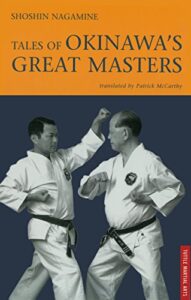
Shares the life histories and legacies of some of Okinawa’s foremost martial arts masters, including Anichi Arakaki, Gichin Funakoshi, Anryo Higaonna, Ano Itosu, Chotoku Yan, and Choki Motubu.
 History and Traditions of Okinawan Karate
History and Traditions of Okinawan Karate
By Tetsuhiro Hokama
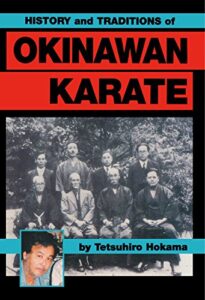
Tetsuhiro Hokama is the owner, curator and operator of the Okinawan Karate Martial Arts Museum. This book features his rare collection of photos and information, for anyone interested in studying the roots of karate.
 The Bible of Karate: Bubishi
The Bible of Karate: Bubishi
By Patrick McCarthy
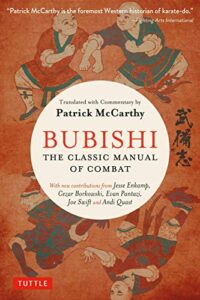
For centuries, the Bubishi has been cherished by karate’s foremost masters. This classic Chinese work delves into philosophy, strategy, medicine, and technique, offering profound insights into the martial arts.
Revered as the ‘bible of karate’ by the renowned master Chojun Miyagi, the Bubishi was, for generations, a clandestine text passed discreetly from master to student, first in China and later in Okinawa. Every legendary figure in karate has either studied, applied its teachings, or transcribed passages from this remarkable work.
The impact of the Bubishi on the shaping and evolution of karate is unparalleled among classic texts. Karate historian Patrick McCarthy dedicated over a decade to researching and studying the Bubishi and its associated arts. A treasure trove for both researchers and practitioners, its pages are enriched with McCarthy’s notes, explanations, and groundbreaking research on Okinawan and Chinese history, as well as the martial and healing traditions that flourished in these regions.
For those seeking the ultimate insight into the genuine origins and spirit of classic Okinawan martial arts, this karate book stands as an invaluable resource. It remains one of the finest supplements for karate training available.
 Karate-Do: My Way of Life
Karate-Do: My Way of Life
By Gichin Funakoshi
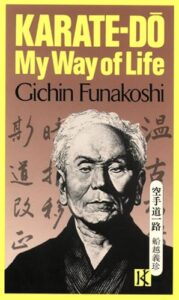
Gichin Funakoshi, the “Father of Karate-do,” links the era when karate was a secretive Okinawan self-defense art to its global practice today.
Reluctant due to modesty, Funakoshi penned this autobiography at nearly ninety. Initially a Confucian scholar and schoolteacher, he later dedicated his life to karate’s propagation after extensive training under masters. Under his guidance, karate evolved, refining techniques, modernizing nomenclature, and emphasizing spiritual essence.
Centuries-old empty-hand techniques in Okinawa lacked historical records, often blurred by fiction. Funakoshi recounts his famous teachers’ mastery, revealing true karate through their actions. His own experiences, from using karate for health improvement to persevering through poverty, embody the samurai way and self-reliance, keeping him healthy into old age.
 The Twenty Guiding Principles of Karate
The Twenty Guiding Principles of Karate
By Gichin Funakoshi
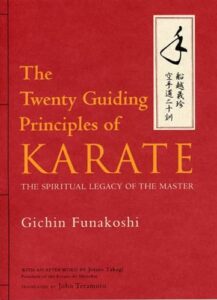
Gichin Funakoshi, “the father of karate,” once said that “the ultimate aim of karate lies not in victory nor defeat, but in the perfection of the character of its participants.”
 My Art by Motobu Choki: Watashi no Karate-jutsu (Legend of the Fist)
My Art by Motobu Choki: Watashi no Karate-jutsu (Legend of the Fist)
By Patrick McCarthy
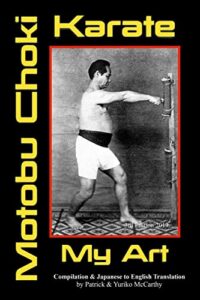
Here, in this small yet provocative publication, lies yet another milestone in the legacy of Karate. “Watashi no Karate-jutsu” (“My Art of Karate”) introduces comprehensive insights into a fighting tradition as known and taught by one of its early Okinawan innovators, Motobu Choki (1870-1944). One of only two books he ever published on the art, it is not widely known in modern karate circles or outside the spectrum of those who research its history.
Straightforward in its approach, this modest work outlines those unique methods that made Motobu Choki, pound for pound, possibly the greatest technician and karate fighter of his generation. One mistake the modern Karate-ka often makes when trying to grasp the technical ambiguities surrounding the application of early karate practices is to depend on contemporary assumption.
This small but powerful book provides a window through which the reader is better able to perceive the cultural landscape and social mindset of those people who shaped its practice. What could possibly improve a reader’s overall understanding of the art more than walking in the footsteps of those people most responsible for pioneering it? Great people should never be forgotten, if only to remind us of the potential latent in ourselves.
By studying the anthropology of this tradition, it becomes evident that many of the early pioneers established a symbiosis with karate so that their lives became as much a product of the art as was the art a product of their lives.
 Karate-Do Kyohan: The Master Text
Karate-Do Kyohan: The Master Text
By Gichin Funakoshi
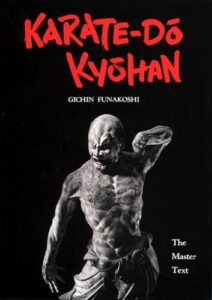
Nineteen kata (“forms”) of karate—the art of self-defense without weapons—are presented here in complete detail. They are the ones selected by the great master and teacher, Gichin Funakoshi, to provide comprehensive training in Karate-do, the way of karate.
Fully illustrated demonstrations by the translator cover not only every technique of the kata but also the fundamentals and applications:
How to make a fist
The correct form of the open hand
Preliminary training in blocking, striking, and kicking
The seven stances
Sparring
The author presents, besides kata that he himself originated, beginning and advanced kata from both the Shorei school and the Shorin school. The former remarkable for their forcefulness and development of strength, the latter characterized by their gracefulness and lightning swiftness.
This book, the most comprehensive and authoritative ever published, was being revised by the author shortly before his death in 1957, at the age of eighty-eight, and is translated for the first time. Through his advice on both practical and spiritual aspects of training, the master guides the student from techniques to the Way of karate.
 Kata Bunkai
Kata Bunkai
By My self 😉
Last but not least are my books dedicated to the practical application of karate techniques. These books are richly illustrated with pictures and accompanied by descriptive text that provides readers with a detailed understanding. Here, the techniques are presented in more realistic situations, particularly in close combat. Serving as a guide, the books demonstrate how kata techniques can be effectively applied in practice. Additionally, readers are encouraged to explore and learn independently, making these books valuable resources for both beginners and experienced practitioners.
Thanks for taking the time to read my book list.
Gert
